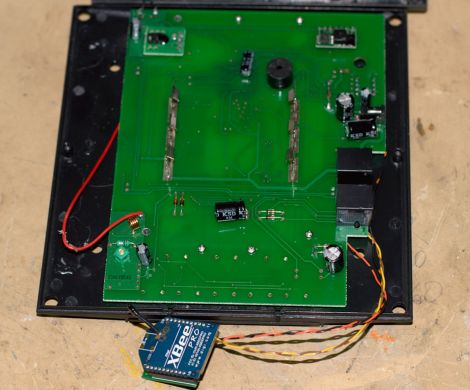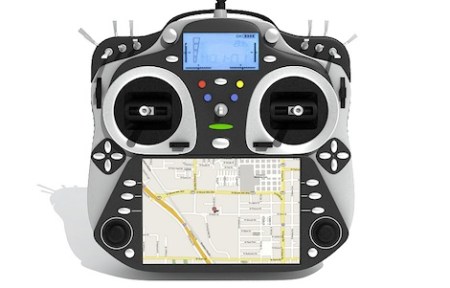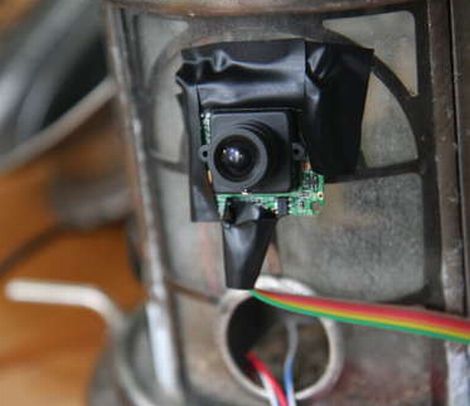
Hackaday reader [equinoxefr] posted some images to our flickr pool showing off some modifications he made (Google Translation) to his La Crosse WS2305 weather station. Having built other router-based weather stations in the past, [equinoxefr] was looking for a better way to gather weather data after one of the routers gave up the ghost.
With a brand new La Crosse WS2305 in hand, his goal was to feed the Lacross’ data to his HTPC which runs XBMC. He pulled the weather station apart and probed around with an oscilloscope until he could find the TTL Tx and Rx pins required to retrieve data from the unit. He hooked the data pins to an XBee wireless transmitter, which he then tucked away in the station’s battery compartment.
Another XBee unit was connected to his computer via an XBee Explorer board, and he was reading data from his weather station in no time.
While his isn’t the first La Crosse weather station hack we’ve seen around here, we like how simple and clean it is. If you’re interested, be sure to check out his flickr stream to see more images of the hacking process.
















